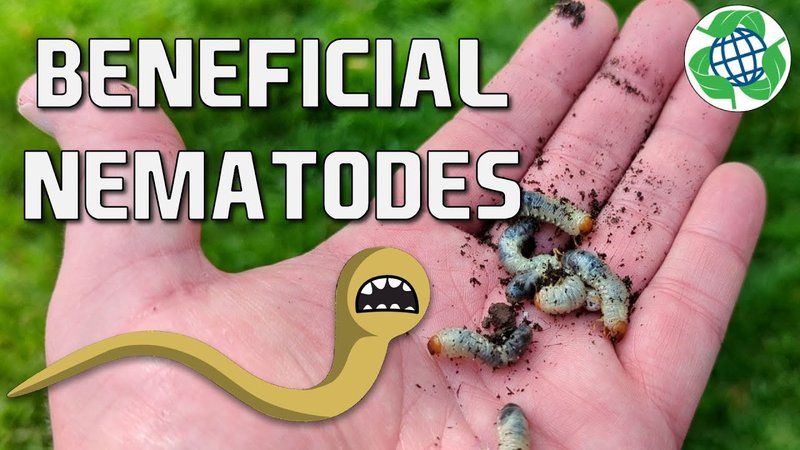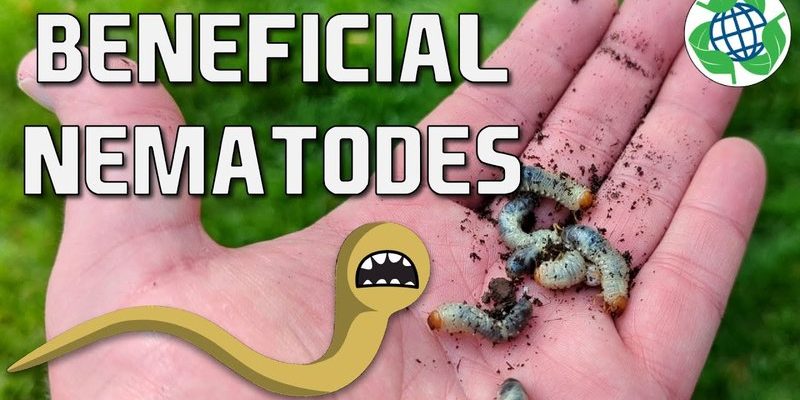
Beneficial nematodes are tiny, microscopic roundworms that target pests like hammerhead worms without harming your plants or soil. Think of them as nature’s little soldiers, ready to do battle against unwanted intruders in your garden. Products like Steinernema feltiae and Heterorhabditis bacteriophora are popular names in the nematode world. Let’s dive deeper into how these tiny worms can help you keep those larger, pesky worms at bay.
What Are Hammerhead Worms?
You might be wondering, “What exactly am I dealing with when I spot a hammerhead worm?” These creatures are flat, elongated worms with a distinctive hammer-like shape at one end. They can grow several inches long and often show up in gardens and landscapes, feeding on other worms and organic matter.
Originally from Southeast Asia, hammerhead worms are now found in many parts of the world, including the United States. While they might look harmless, they can pose a significant threat to soil health by feeding on beneficial earthworms and disrupting the ecosystem. Essentially, they’re like that one guest at a party who overstays their welcome and eats all the snacks. Therefore, finding effective ways to suppress them becomes crucial for any gardener who wants to maintain a thriving garden.
How Do Beneficial Nematodes Work?
So, you’re probably curious about how these beneficial nematodes can help tackle the hammerhead worm problem. Here’s the thing: beneficial nematodes are parasitic, but only to specific pests. When they come into contact with hammerhead worms, they penetrate their bodies and release bacteria that multiply inside the host, eventually leading to its demise.
Think of beneficial nematodes as tiny hitmen. They invade their targets and ensure they don’t cause any more trouble. What’s great is that they do all this without harming other beneficial insects, plants, or pets. It’s this specialized targeting that makes them a preferred choice for organic gardeners.
Choosing the Right Beneficial Nematodes
Not all nematodes are created equal, so it’s essential to choose the right type for combating hammerhead worms. The two most effective species are **Steinernema feltiae** and **Heterorhabditis bacteriophora**. Each has its strengths, so let’s take a closer look at them.
- Steinernema feltiae: This species excels in cooler soils and is often effective during spring and fall. It’s perfect for temperate climates where hammerhead worms tend to thrive.
- Heterorhabditis bacteriophora: This type prefers warmer conditions and is best used during the summer months. It’s a great choice if your garden gets plenty of sun and warmth.
When selecting nematodes, also check for freshness and viability. The more active they are, the better they’ll be at battling those unwanted pests. Look for products that come in a refrigerated or moist format, as this helps ensure their health during shipping.
How to Apply Beneficial Nematodes
Alright, now that you have your beneficial nematodes, how do you get them into your garden? It’s easier than you might think. Follow these simple steps for effective application:
1. **Prepare the Soil:** Before applying nematodes, make sure the soil is moist. Water your garden a day or two before application to create a welcoming environment for them.
2. **Mix the Nematodes:** Follow the package instructions to mix the nematodes with water. You’ll usually want to use about one million nematodes per 200 square feet.
3. **Application:** Use a spray applicator, garden sprayer, or watering can to distribute the nematodes evenly across the affected areas. Ensure that you cover all potential hiding spots of the hammerhead worms.
4. **Keep It Moist:** After application, keep the soil moist for at least a week. This helps the nematodes find their targets more effectively.
By following these steps, you’ll give your beneficial nematodes the best chance to thrive and do what they do best—take out those pesky hammerhead worms.
When to Use Beneficial Nematodes
Timing is everything when it comes to using beneficial nematodes. The best time to apply them is during the evening or on a cloudy day to protect them from UV rays, which can harm their effectiveness. Ideally, aim for early spring or late summer, as these are peak times for hammerhead worms.
You might be pondering, “How long until I see results?” You should start to notice a decline in hammerhead worm activity within a few weeks. However, patience is key! Ecosystems take time to balance, and your nematodes need a moment to do their job effectively.
Monitoring Your Garden After Application
After applying beneficial nematodes, it’s a good idea to monitor your garden for any changes. Look for signs that hammerhead worms are disappearing or reducing in numbers. You’ll also want to check the health of your plants; if they start to look perkier, that’s a good sign that your efforts are paying off!
You may also consider reapplying nematodes if you notice any resurgence of hammerhead worms, particularly if you live in an area where they are common. Keeping a close eye on your garden will help you make informed decisions about future treatments.
Alternatives to Beneficial Nematodes
While beneficial nematodes are fantastic, they aren’t the only option available to you. Here are a few alternatives you might consider:
- Manual Removal: If the infestation is small, simply picking the hammerhead worms out by hand can be effective. Just be sure to wear gloves!
- Traps: Certain types of traps can attract and capture hammerhead worms, helping to reduce their numbers without chemical intervention.
- Natural Predators: Some birds and other wildlife naturally prey on hammerhead worms. Creating a wildlife-friendly environment can help keep their numbers down.
While these methods can work, beneficial nematodes provide a more thorough, long-term solution that doesn’t involve damaging the ecosystem.
Using beneficial nematodes to suppress hammerhead worms is not only effective but also aligns with organic gardening principles. They’re tiny soldiers in your garden, ready to help you fight against unwanted pests. By choosing the right species, applying them properly, and monitoring their success, you can keep your garden healthy and thriving.
Next time you spot a hammerhead worm, remember that you have a natural weapon at your disposal. With a bit of care and attention, your garden can be a sanctuary free from these unwelcome guests. Happy gardening!

